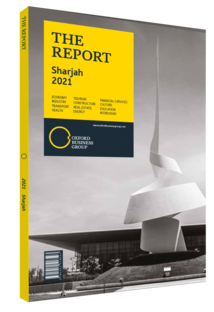Hatem Al Mosa, CEO, Sharjah National Oil Corporation (SNOC): Interview

Interview: Hatem Al Mosa
How is Sharjah pursuing its energy security goals amid rising demand for power?
HATEM AL MOSA: Managing energy security involves a multifaceted approach that relies on the diversification of supply. In addition to SNOC’s production, Sharjah’s gas supply includes pipeline imports, access to existing liquefied natural gas regasification units and gas from across the UAE. To further strengthen these efforts, SNOC established a gas storage facility, a project that was commissioned in late 2020.
Sharjah was the main source of gas for the northern emirates in the 1980s and 1990s, and as such all supply lines converged at the plant in Sajaa. This infrastructure remains in place and has the capacity to transport more than 1bn standard cu feet per day (scfd) of gas – a capacity that is underutilised. Indeed, SNOC was able to process natural gas found in early 2020 at the onshore Mahani-1 well with almost no additional infrastructure. Natural gas from the well was connected to the Sajaa processing complex, with production starting in January 2021. The quick commencement of operations was a significant achievement for Sharjah and enhanced gas supply for local energy needs. The new production came two years after completion of the First Sharjah Licence Round, and additional areas of Sharjah will be licensed in line with the emirate’s strategic plans in the coming years.
In what ways can digitalisation be harnessed to boost efficiency across the oil and gas sector?
AL MOSA: Incorporating digital technologies into business processes and interactions has significantly improved efficiency, productivity and decision making in this sector. While the industry is still far from the full adoption of digital tools, investment in big data could unlock some of the sector’s potential by enabling the more efficient use of products and better management of market needs. For example, big data could play a role in the marketing, transportation and trading of gas. There are currently several gas suppliers, and many users and owners of pipelines. All transactions between these players are done on a one-to-one basis. An open trading platform could grant each player access to available capacity at a transparent cost. Any gas supplier would have the ability to place their merchandise on the market, while any customer could pick it up and transport the gas.
Artificial intelligence also has a role to play in digitalisation, adding value by optimising all elements of field production, including analysis of well and reservoir performance, as well as processing plants. However, sustained investment in cybersecurity will be necessary to safeguard these digitalisation efforts.
What initiatives are being deployed to minimise the environmental impact of existing assets?
AL MOSA: The environmental agenda was a priority for Sharjah’s oil and gas sector before the establishment of SNOC, when emissions began to be tracked and programmes implemented to reduce them starting in 1999. These efforts resulted in a reduction of more than 95% of methane emissions by deploying projects aimed at eliminating sources of direct methane venting into the atmosphere. Flaring has also been reduced to minimal levels, keeping only enough lit for an emergency, since the ability to flare is an essential part of the plant’s safety system. We have achieved less than 300,000 scfd of flaring. Neighbouring countries, such as Iraq or Iran, flare 2bn scfd on average, while shale gas operators in Texas flare 600m scfd.
In addition to recycling initiatives and environmental awareness programmes, we installed solar energy systems in the liquefied petroleum gas terminal to in order to reduce electricity imports. This has resulted in lower levels of fuel consumption. Approximately 20% of the terminal’s power needs are now met with solar energy. The plan is to expand the renewables programme to further reduce SNOC’s carbon footprint.
You have reached the limit of premium articles you can view for free.
Choose from the options below to purchase print or digital editions of our Reports. You can also purchase a website subscription giving you unlimited access to all of our Reports online for 12 months.
If you have already purchased this Report or have a website subscription, please login to continue.

